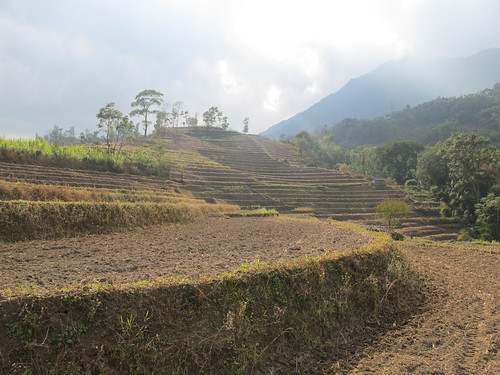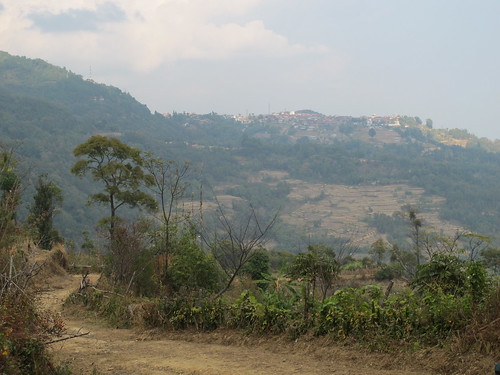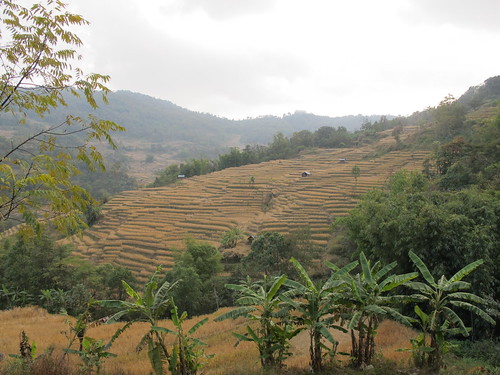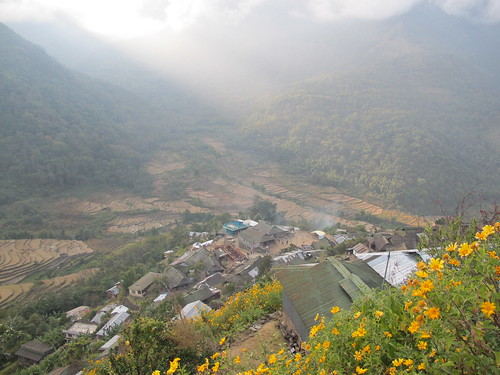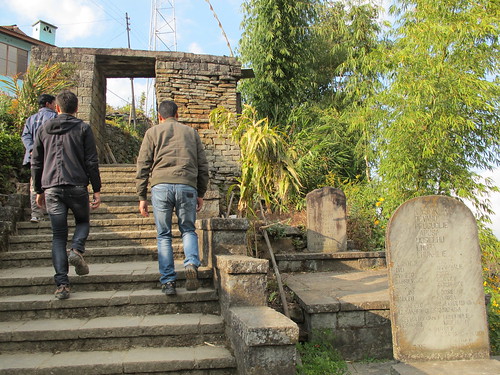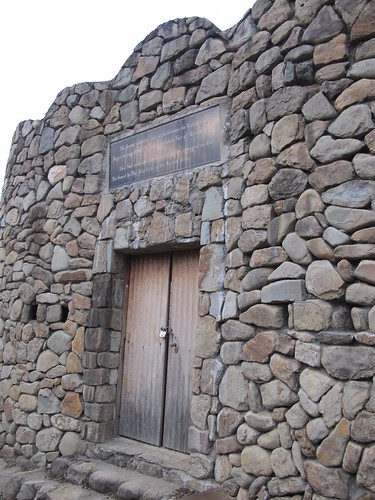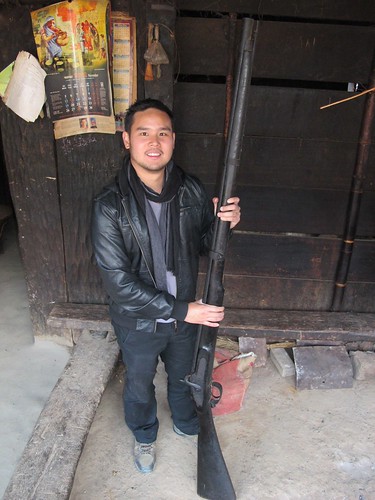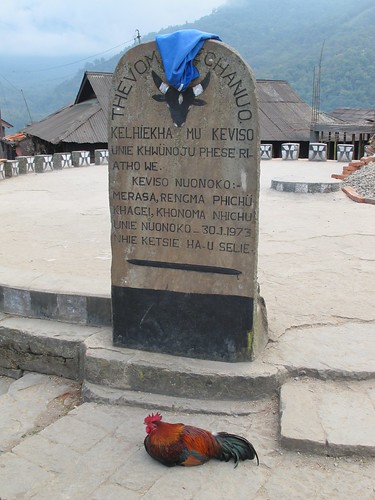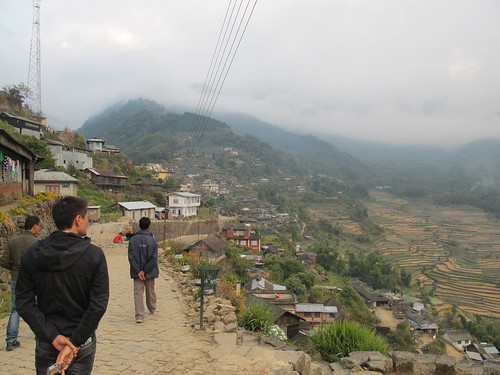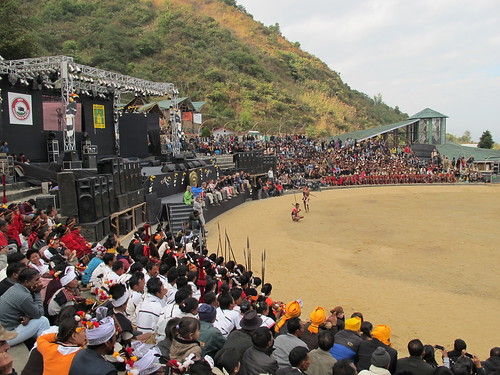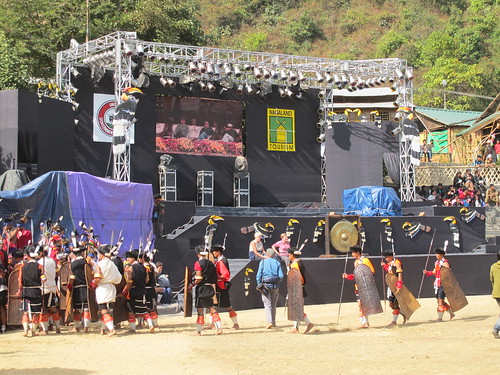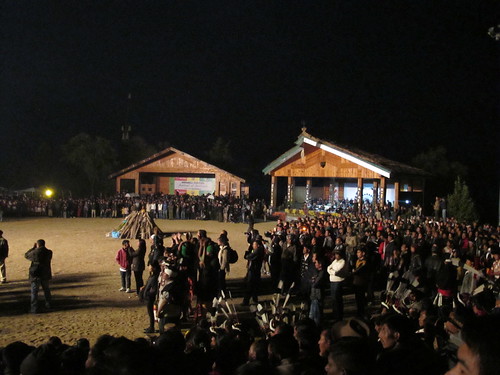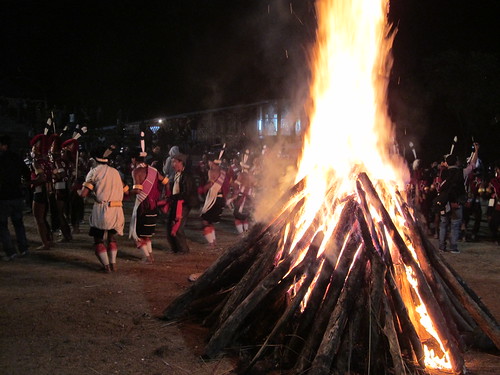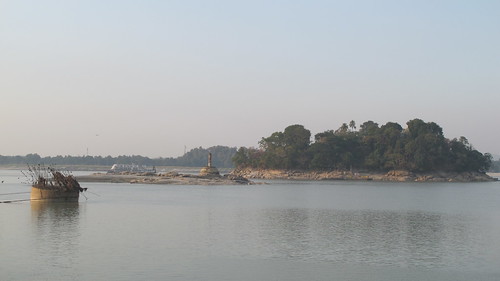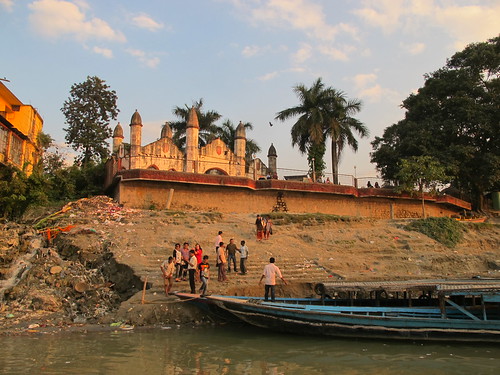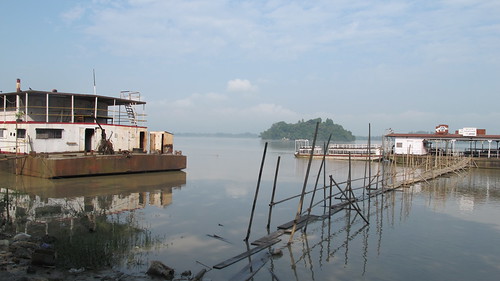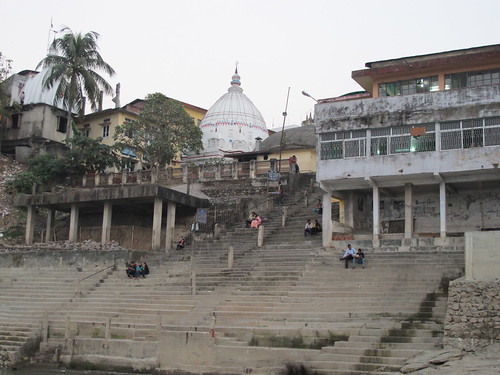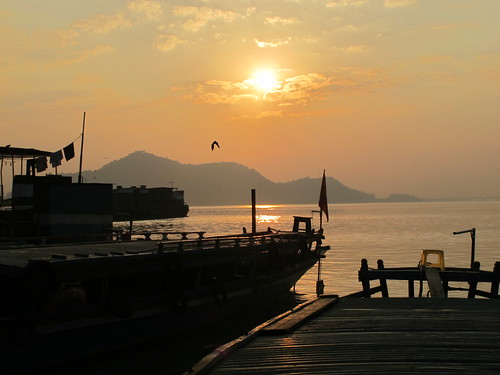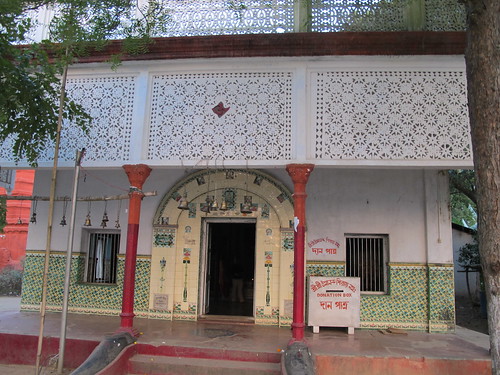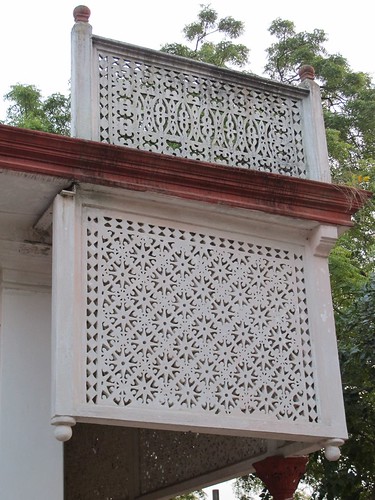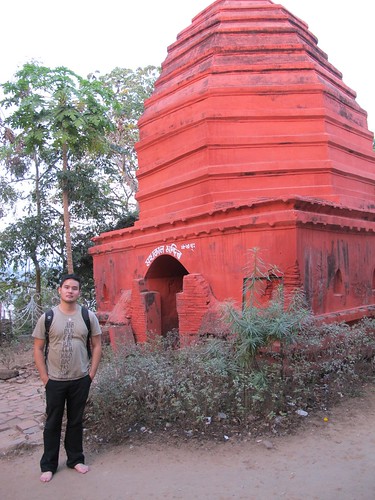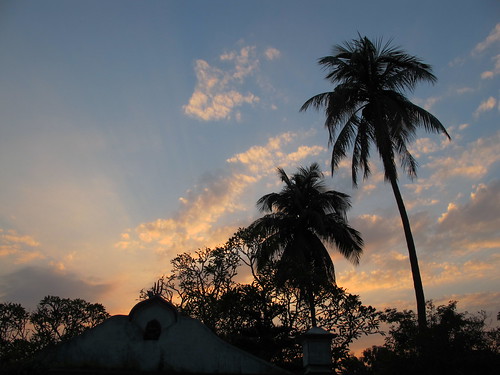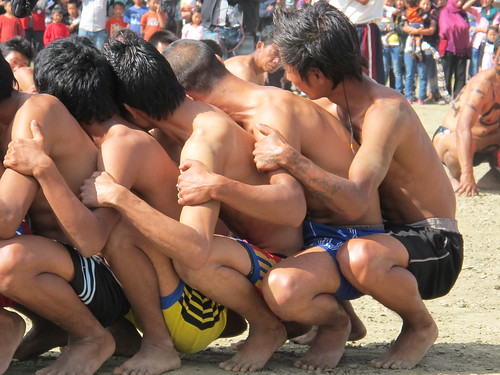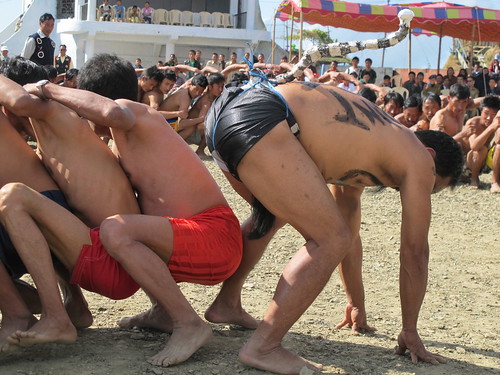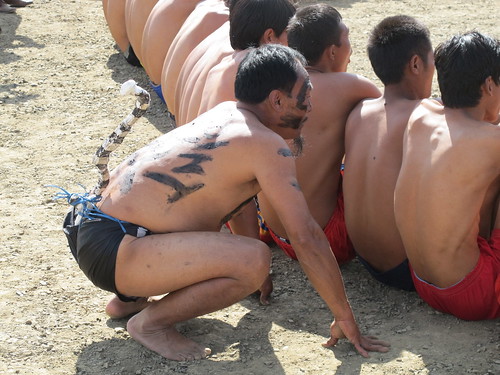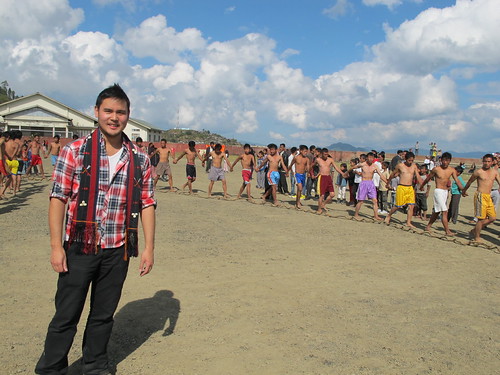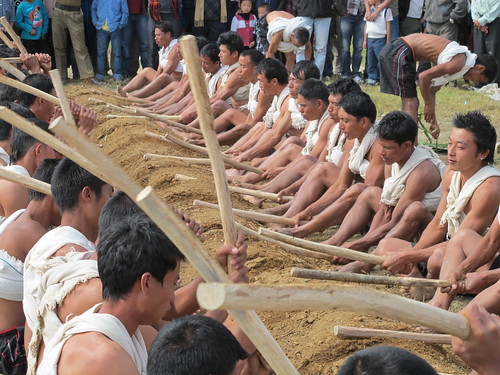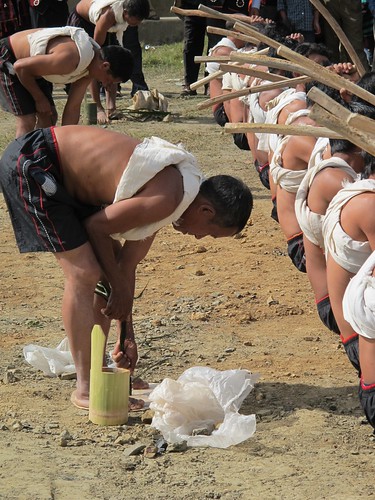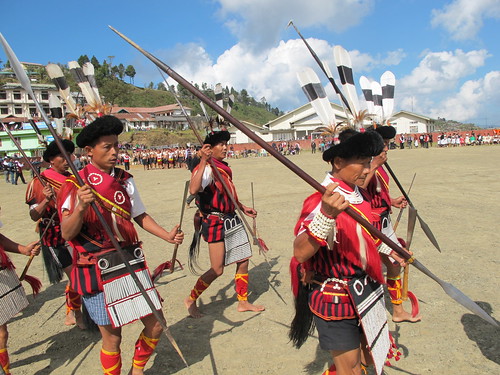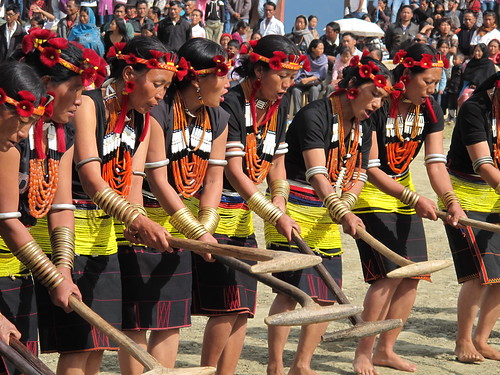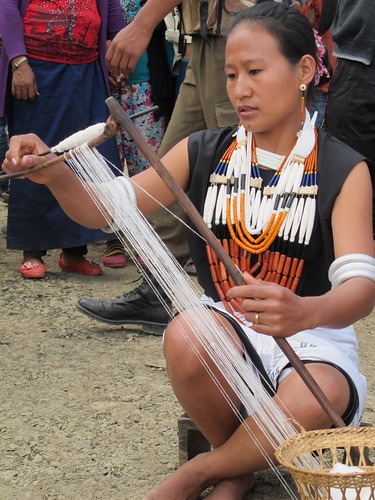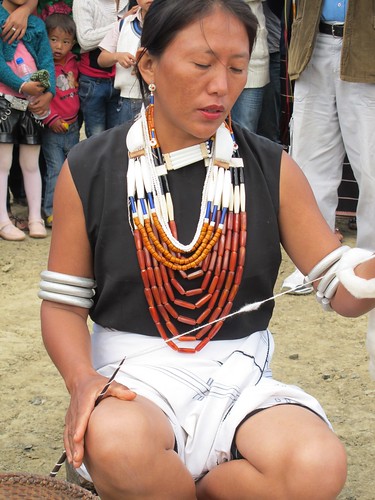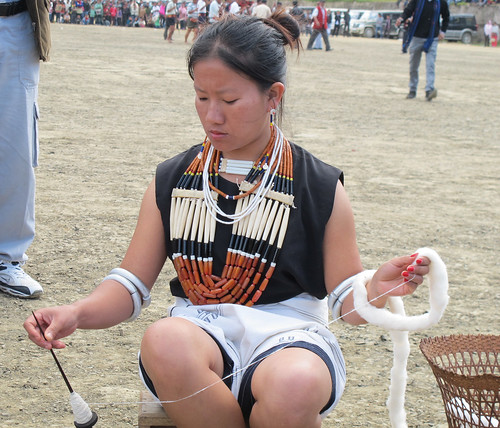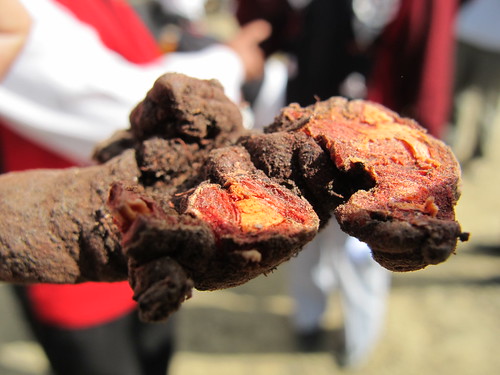As I prepare to leave India again (this time to spend Christmas at home with the family for the first time in years), I thought I'd share some photos from a visit to another friend's village in Nagaland. Like Khonoma village that we also visited, Khuzama is an Angami village. You can tell it's an Angami by the suffix -ma (corresponding to Sumi village names that end in -mi). However, most Angami speakers seem to replace the -ma with -ra / -rie when they refer to the villages in speech.
While Khonoma is a Western Angami village, Khuzama is one of the Southern Angami villages situated on the highway between Kohima and Imphal in Manipur. It's also the last Angami village before you reach the state border with Manipur and the start of Mao territory. The Maos (not to be confused with Maoists) are another related tribe. Linguistically, Southern Angami dialects are so different from Tenyidie (standard Angami based on Northen Angami) that they might constitute a different language altogether. My friend from Khuzama says he finds it easier to understand Chokri (one of the main languages of the group previously classified as 'Eastern Angami' but now known as Chakhesang).
Our 'guide' for the afternoon brought us to our friend's plot of land. Unlike with jhum cultivation, which involves shifting to a new field site every 2 years and the re-allocation of new plots to people to cultivate (typically by the village chief), terraces are 'owned' by the same people every year. They are also passed down from generation to generation, but only to sons I believe.
From the village, we could also see the neighbouring village of Viswema. I'm told it's the largest of the Southern Angami villages. If you've been on the highway from Kohima to Imphal, you would have probably noticed that most of the roofs on the houses have been painted red, making it almost look like some Italian village on a hilltop.
We had a really pleasant afternoon walking around the terraced fields down to the stream. It didn't take us long to get down, but the climb back up was quite strenuous, and we weren't carrying baskets of grain or anything back up to the village with us! We were told that when there's a lot of work to be done in the fields, some villagers do sleep in the field huts that you can see dotting the hillside.
I should add that the Angamis and Chakhesangs (formerly 'Eastern Angamis', as mentioned above) are cited as the only two tribes in Nagaland to have started practising terracing before the arrival of the British. (They do still practise some jhum cultivation to grow other crops.) I've been asking around about the origins of terracing in these tribes, as it strikes me as imported technology, but no one I've asked has been able to give a satisfactory reply. I would be quite interested to find out more about local stories / folktales surrounding its origins in these communities.
Alright, this will probably be my last post in India for a while. I still have a backlog of material to upload, and I'll try to do that when I'm back in Singapore or Australia. In the meantime, Happy Holidays everyone!
While Khonoma is a Western Angami village, Khuzama is one of the Southern Angami villages situated on the highway between Kohima and Imphal in Manipur. It's also the last Angami village before you reach the state border with Manipur and the start of Mao territory. The Maos (not to be confused with Maoists) are another related tribe. Linguistically, Southern Angami dialects are so different from Tenyidie (standard Angami based on Northen Angami) that they might constitute a different language altogether. My friend from Khuzama says he finds it easier to understand Chokri (one of the main languages of the group previously classified as 'Eastern Angami' but now known as Chakhesang).
The current Khuzama village gate
The weekend my friend from Australia was around, our Angami friends who usually live in Kohima had a church function to attend in Khuzama. I thought it'd be nice to go for a walk around the terraces and they were happy for us to take us to the village. They got one of the boys in the village to take us around, and also to explain to people why a couple of strangers were walking around their village.
Our 'guide' for the afternoon brought us to our friend's plot of land. Unlike with jhum cultivation, which involves shifting to a new field site every 2 years and the re-allocation of new plots to people to cultivate (typically by the village chief), terraces are 'owned' by the same people every year. They are also passed down from generation to generation, but only to sons I believe.
From the village, we could also see the neighbouring village of Viswema. I'm told it's the largest of the Southern Angami villages. If you've been on the highway from Kohima to Imphal, you would have probably noticed that most of the roofs on the houses have been painted red, making it almost look like some Italian village on a hilltop.
We walked down all the way to the little river / stream. It would've been nice to have a picnic on the rocks in the middle of the stream, but we hadn't organised ourselves that well.
We had a really pleasant afternoon walking around the terraced fields down to the stream. It didn't take us long to get down, but the climb back up was quite strenuous, and we weren't carrying baskets of grain or anything back up to the village with us! We were told that when there's a lot of work to be done in the fields, some villagers do sleep in the field huts that you can see dotting the hillside.
I should add that the Angamis and Chakhesangs (formerly 'Eastern Angamis', as mentioned above) are cited as the only two tribes in Nagaland to have started practising terracing before the arrival of the British. (They do still practise some jhum cultivation to grow other crops.) I've been asking around about the origins of terracing in these tribes, as it strikes me as imported technology, but no one I've asked has been able to give a satisfactory reply. I would be quite interested to find out more about local stories / folktales surrounding its origins in these communities.
Alright, this will probably be my last post in India for a while. I still have a backlog of material to upload, and I'll try to do that when I'm back in Singapore or Australia. In the meantime, Happy Holidays everyone!



